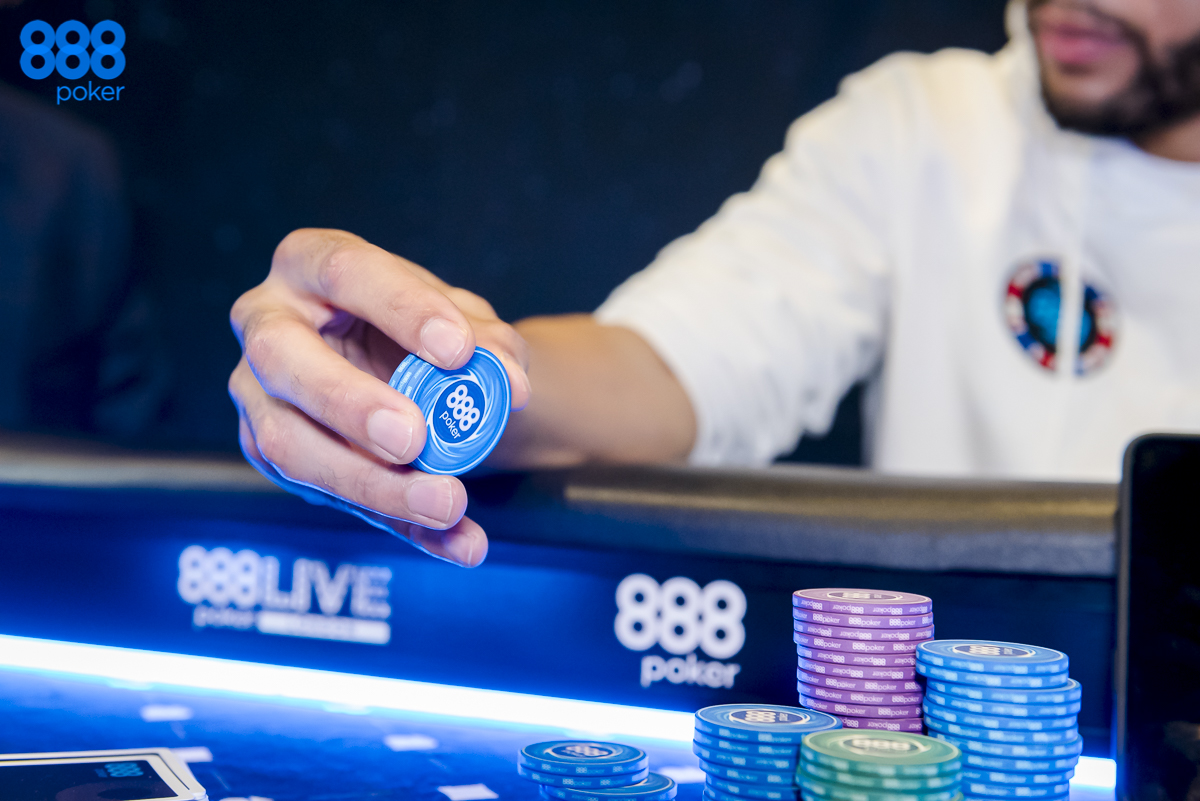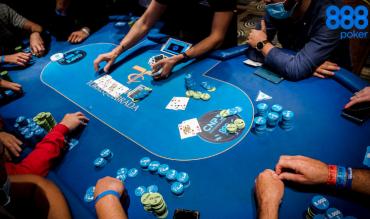When poker players create preflop strategies, there is a tendency to focus mainly on situations involving two players. Many commercially available sets of preflop ranges exclusively centre on heads-up situations.
The reality is more complex, especially for live players. Live players often find that several players have entered the pot by the time the action gets to them. Their heads-up preflop ranges now have very limited value.
It would be challenging to create a preflop strategy that covers all the various multiway possibilities. So, what should a poker player do in that case?
It’s possible to study multiway preflop theory to some extent. But it mostly comes down to the player to make the best decision in the moment.
We likely won’t have a preflop chart covering our exact scenario. But we can do a lot to improve our play in multiway situations.
In this article, we’ll discuss strategies for multiway preflop play.
Table of Contents
Multiway vs Heads-Up Hands
Some hands do well multiway while others are better heads-up.
Generally, hands that make strong straights, flushes, sets and full houses perform well in multiway pots. Examples include suited the following –
- Aces
- Suited broadways
- Premium suited connectors
- Pocket pairs
Hands whose main strength is making good top-pair-type holdings prefer heads-up action. A classic example is AKo, as it can potentially make the nut straight/flush.
But most of its strength comes from its ability to flop a very strong top pair. It’s much less likely to make a straight or flush than JTs.

- The simple idea here is that TPGK (top pair with a good kicker will often be the best hand in a heads-up postflop situation.
- In multiway scenarios, it’s more likely that one of our opponents has top pair beat. We’ll need a strong 5-card hand to feel comfortable about winning the whole pot.
Examples of hands that prefer heads-up pots are AQo, AJo and KQo. These hands have limited straight/flush potential but can make strong top-pair-type hands.
Some hands can be ‘hybrids’ since they play well in heads-up and multiway situations. An example might be AJs.
This hand does well in large multiway pots due to its nut-flush potential. It also performs very well in heads-up pots as it can flop top pair with a decent kicker.
Controlling the Action
We now know which hands prefer which types of pots, but how does this help us on a practical level?
Put simply we should look to narrow the field by raising when we have a hand that prefers heads-up action.
We can summarise our approach as follows:
| Hand Type | Strategy |
| Heads-up (Prefers heads-up postflop play |
We should play aggressively with the goal of either taking down the pot preflop or creating a heads-up pot vs a single opponent. |
| Hybrid (Plays well heads-up and multiway) |
We are flexible and can choose to either play multiway or narrow down the action by raising. Even if we get multiple callers after raising this is not a problem. |
| Multiway (Prefers multiway action) |
We’ll generally choose to continue by calling and encouraging a multiway pot. |
Let’s now discuss some examples of everyday multiway preflop situations.
Iso-Raising
An iso-raise (isolation raise) is where we raise preflop when facing one or more limpers. Live players often face several limpers when the preflop action gets to them.
Our iso-raise size should increase based on the number of limpers. A common approach is to increase the size by 1bb for every additional limper.
- For example, if our standard iso-raise size in a live game is 8bb, we’d raise to 10bb if facing three limpers preflop. That’s 8bb for the initial limper and 1bb each for the additional two limpers.
Iso-raise sizings in live games vary a lot. Even large iso-raise sizings may result in several callers.
Iso-raising by Hand Type
Heads-up – We should iso-raise large if our hand prefers heads-up action. Say we are consistently getting multiple callers. We should increase the size until we take down the pot preflop or get heads-up action.
Multiway / Hybrid – Multiway/hybrid hands may choose to limp behind and encourage multiway action. If we decide to iso-raise, we are comfortable using smaller sizings since we don’t need to discourage multiway action.

Overcalling / Squeezing
An overcall is where we call preflop after there has already been a raise and one or more calls before us.
Assuming we decide to raise (3bet) in this situation, we would be squeezing.
- A common approach to squeeze sizing is to raise 3x + X.
This formula equates to raising to 3 times the initial raise amount along with an additional raise amount for each caller.
For example, imagine our opponent open-raises to 5bb and gets two callers. A typical squeeze amount might be 25bb. (3 x 5bb and an extra 5bb for each of the two callers).
The ideal squeeze amount in a live game will vary depending on how consistently we get folds when narrowing down the action.
Overcalling / Squeezing by Hand Type
Heads-up – With heads-up hands, we should consider squeezing to pick up the pot preflop or generate heads-up action. Say our squeezes are consistently getting multiple callers. We should experiment with increasing the sizing.

Multiway – Multiway hands should choose to overcall and encourage multiway action. A holding like T8s will do very well in multiway pots but not so well in a heads-up pot. It doesn’t make strong top-pair-type hands.
It’s essential to account for the number of players still to act when deciding on how wide to overcall. Any time we overcall in a non-BB position, we risk facing a squeeze and potentially not seeing a flop.
Hybrid – Examples of hybrid hands include A4s. These hands should mostly call and, occasionally, choose to squeeze. Note that our exact squeezing range will depend on our position at the table. We can squeeze wider against later position opens.
4bet Squeezing
A 4bet squeeze is where we 4bet facing a 3bet and a call. It’s not the most common situation, but it happens occasionally. So, it’s useful to know how to deal with it.
An example would be when our open raise faces a 3bet, which another opponent calls.
When the action gets back around to us, we have two options -
- Overcall the 3bet and see a multiway flop.
- 4bet against both opponents (aka 4bet squeezing).
A typical 4bet squeeze size is 2x + X for each caller. In most cases, there is precisely one caller. So, the most common 4bet squeeze size is 3x the size of the initial 3bet.
- Imagine we open to 6bb UTG in a live game.
- CO 3bets to 20bb and BB cold calls against the 3bet.
- A typical 4bet squeeze size should be 60bb.
But this play is only reasonable if we are playing 200bb deep (as many live cash games do). If we are only playing 100bb effective, then it is likely that the 4bet squeeze should be all-in.

4bet Squeezing by Hand Type
Heads-up – Heads-up hands should 4bet squeeze rather than overcall, but these hands should typically be very strong, often QQ+/AK. it is correct in theory to have some hands that 4bet squeeze intending to fold to a 5bet, such as AQo or the hybrid hand A5s.
Hybrid / Multiway – These hands should overcall against the 3bet if we consider them strong enough. We may be able to call relatively wide, including 77+, good suited connectors/gappers, suited aces and suited broadways as a rough guide.
We can call this wide because we are last to act on the preflop betting round and guaranteed to see a flop. Hybrid hands such as A5s may occasionally 4bet-squeeze, intending to fold to a 5bet. It won’t be a big problem against most opponents if we never 4bet squeeze these types of holdings.
Cold 4betting
The cold 4bet is another opportunity that crops up every so often, and it’s good to know how to make the most of it.
A cold 4bet opportunity occurs when there is a raise and a 3bet (or squeeze) before us. We have the option of entering the pot by 4betting directly.
This line represents a lot of strength since a number of players only ever cold 4bet with KK+.
A typical cold 4bet sizing is around 2.5x the size of the initial 3bet. But the ideal sizing can vary significantly in live games.
The other option in this situation is to cold call the 3bet. But it’s crucial to remember that the original raiser will still get another chance to act. They may elect to 4bet squeeze, meaning we’ll need to fold or invest additional chips to see a flop.

Cold 4betting by Hand Type
Heads-up – Heads-up hands should consider cold 4betting. In most cases, a hand should be at least AQ+ / QQ+ to consider cold 4betting, but it depends on the precise situation. We may be able to cold 4bet wider if our opponents are happy to always give us credit for a monster hand.
Hybrid / Multiway – Hybrid/multiway hands can consider cold calling against the 3bet if they are strong enough. We usually need at least 88+, ATs+ to consider calling the 3bet (and even this will be too wide in some situations).
Part of the problem is that we are not last to act on the preflop betting round. The original open raiser will have the option to 4bet squeeze, potentially pushing us off our holding before seeing a flop.
3way vs 4way+ Postflop
It might be tempting to treat all multiway situations equally regardless of the number of players. The number of players makes a big difference and should be a factor in our preflop decision-making process.
- One difference is that we’ll likely get some decent bluffing opportunities in 3-way postflop situations but almost none in a pot with four or more players.
- Another crucial difference is that strong made hands are much more likely to be dominated in big family pots. Our set of twos might be the effective nuts 3-way but needs to be treated with much more caution in a 6-way pot, especially if the stacks are deep.
The technical explanation is as follows –
While baby pocket pairs and low suited connectors benefit from great implied odds, this quickly turns into reverse implied odds when many players are involved.
We should think carefully about our postflop objectives when deciding on the best line to take preflop.
Multiway Preflop Summary
We have considered a broad overview of solid strategy in multiway preflop situations. There are too many possible situations for us to memorise specific preflop ranges.
- The key takeaway from this discussion is how to think about multiway preflop scenarios.
Our main objective is to think about the ideal postflop scenario for our hand and take steps to make that ideal scenario a reality.
Some starting hands prefer heads-up pots, while others do well in multiway scenarios.
Of course, we should not expect our plans to always succeed. Our opponents are also trying to meet strategic objectives, which often differ from ours.
Having a clear vision and purpose for our preflop decisions will mean that we are in profitable postflop situations more often.
This strategy, in turn, translates to higher win rates and bigger profits at the table.


